The Methodist’s 1908 building follows a form of American urban church architecture known as the Akron Plan. As is obvious from the exterior view, the layout is in marked contrast to the more traditional cruciform footprint. The Akron Plan is characterized by a sanctuary or auditorium with sloping floor and seats arranged in a semicircle rather than straight rows of pews. The intent was to provide an unobstructed view of the centrally placed speaker as in an amphitheater with stage. Seating utilized either curved pews or individual theater-type seats.
This new architectural style was designed by Lewis Miller (1829-1899), an Akron inventor, manufacturer and businessman. Although originally intended for Protestant Sunday schools, the form came to be applied to entire church buildings as well. Between 1870 and World War I, thousands of Akron Plan churches were built throughout the country. The Methodists were in the forefront of the American Sunday school movement. In the mid-nineteenth century, the new Uniform Lesson System, requiring separate instruction by grade level, replaced an earlier teaching style aimed at a multigenerational audience. The Akron Plan was developed in response to this new form of Christian education.
In the Akron Plan, graded classrooms were arranged along the back walls of a church at both the main floor and balcony levels with easy access to the central auditorium space. Sliding wooden doors at the back of the main floor could be slid opened to provide additional seating as needed. Overhead doors in the balcony could also be rolled up or down to accommodate either worshippers or Sunday school classes. This could be seen as an early attempt at designing multipurpose space.
Besides the Akron Plan, various other features characterize the Ames First Methodist Church. In wintertime, when attendance levels were slim and heat conservation was important, a huge panel (now removed) could be cranked down from the attic to reduce the size of the sanctuary. This massive wall normally resided in the dome space when not in use. A smaller-scale tambour overhead door in a side-wall camouflaged built-in library shelving.
The foresight of this early congregation is amazing. Although plans did not include a dome, an impressive one was added almost immediately. The sanctuary space was vast, accommodating seating for 1,500 over two levels. For many years, the downtown Methodist Church provided the largest auditorium space in Ames and was consequently used for college functions as well. The dual lighting system allowed for the gas and electric lights from the same fixtures. The pipe organ, a 16-rank Hilgren-Lane, originally utilized a water-engine for the blower. As the city water bill steadily increased, the switch to an electric motor was made to the wind supply. The original tubular-pneumatic action, centrally placed console attached to the organ case was replaced later by an electro-pneumatic, detached console placed off center. In 1980, a 38-rank, 1,368-pipe Casavant Frères organ replaced the Hilgren-Lane.
Ministers
Bloomington Circuit including Ames
1859 - S.F. Gossard in charge of Bloomington District
1861 - W.O. Glassner
1863 - James Hawkins
1864 - J.M. Dudley
First Methodist Church Ministers
1865 to 1867 - W.S. Dorwin (Bloomington Circuit)
1867 to 1868 - Theodore Powell Newland (Ames Circuit)
1868 to 1870 - Elijah Kendall
1870 to 1871 - James W. Eckles
1871 to 1873 - Amos Wilson
1873 to 1875 - Artemas Brown
1875 to 1877 - Ichabod Taylor Miller
1877 to 1878 - Ebenezer Walker Brady
1878 to 1879 - Benjamin Franklin Durfee
1879 to 1880 - J.A. Smith
1880 to 1881 - William Abraham(s)
1881 to 1883 - Elijah Kendall
1883 to 1884 - Dugald Thompson
1884 to 1887 - H.J. Everly
1887 to 1888 - Alpheus Lucian Hunt
1888 to 1890 - William E. Stevenson
1890 to 1892 - Robert W. Smith
1892 to 1897 - H.J. Everly (Expelled)
1897 (filled in) - W.J. Stratton
1897 to 1899 - D.L. Thomas
1899 to 1900 - John Franklin St. Clair
1900 to 1901 - Charles Lewis Baxter
1901 to 1903 - Charles L. Nye
1903 to 1908 - Andrew M. Shea, DD
1908 to 1909 - Andrew M. Schea
1909 to 1911 - George D. Crisman
1911 to 1912 - Jay Kirkendall
1912 to 1916 - T.E. Thuresson
1916 to 1918 - M.E. Nethercut
1918 to 1924 - F. C. Edwards
1924 to 1925 - EmM. Evans
1925 to 1929 - Raymond M. Shipman
1929 to 1932 - H.S. Wilkinson
1932 to 1938 - Walter A. Morgan
1938 to 1945 - Alfred H. Barker
1945 to 1948 - Raymond C. Walker
1948 to 1959 - Robert W. Pinnell
1959 to 1967 - Lawrence B. Beals
1967 to 1973 - William F. Overhulser
1973 to 1977 - Henry Hackman
1978 to 1986 - John Moore
1986 to 1991 - Galen Peckham
1991 to 1995 - James Louk
1995 to 2001 - Larry LaVelle
2001 to ------ - Fred Lewis
Associate Pastors
1960 to 1961 - George Gibson
1961 to 1967 - Harold E. Harryman
1967 to 1970 - Basil Tadlock
1970 to 1973 - Lawrence Garrett
1973 to 1978 - Robert Simmons
1978 to 1986 - James Dotson
1986 to 1991 - David Shogren
1991 to 1992 - Kenneth Bell
1993 to 1995 - Brian McNamara
1995 to 2000 - Leland Webb
2000 to 2001 - Barbara Mittman
2001 to ----- - Charles Kelsey
Assistants to the Pastors
1976 to 1983 - Cecil Wells
1983 to ???? - Gerald Lamotte
1990 to 1996 - Loren Ritz
1997 to 1999 - Wallace Kinzler
1999 to ----- - Larry Vallery
Church Members in Specialized Ministry
W. Bailey Waltmire
Verda Aegeter
Charles Likely
Robert Griffen
Steve Burgason
Franklin Heubner, Jr.
Tony Hershey
Sheryl Stump Weeden
Tim Davidson
Kenneth Furgason

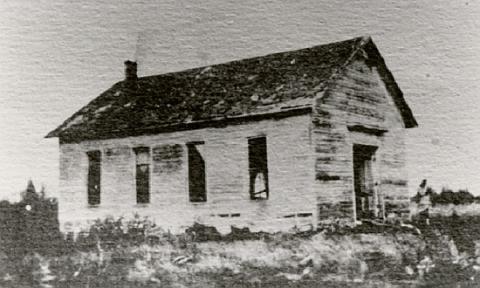

![This inset portion of the 1875 Andreas Atlas Birds Eye View of Ames shows the wood-frame Methodist Church (7) located at the corner of Kellogg and Onondaga. The Baptist Church (8) is located at the intersection of Kellogg and Fifth Street. The Congregational Church (9) is located at the intersection of Kellogg and Sixth Street. 1887 History of Story County, Iowa, by W.G. Allen - About this time [1869], or prior, Mr. Blair, also, donated grounds to the Methodist Episcopal Church Society upon which a church building was to be erected. Rev. J. R. Williams, of Indiana, gave $100 to aid in the building of the church. Many others of Ames and vicinity, also, made generous donations for this object.](https://ameshistory.org/sites/default/files/styles/large/public/16_1875_birdseye_inset.jpg?itok=xPyjeLSR)
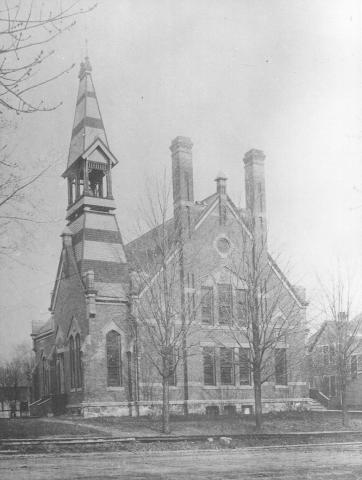













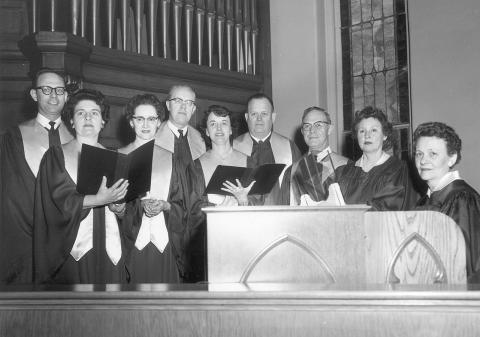




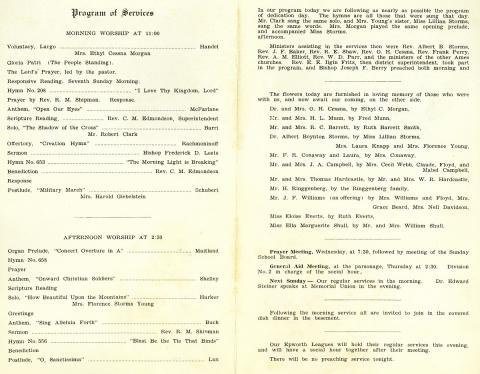


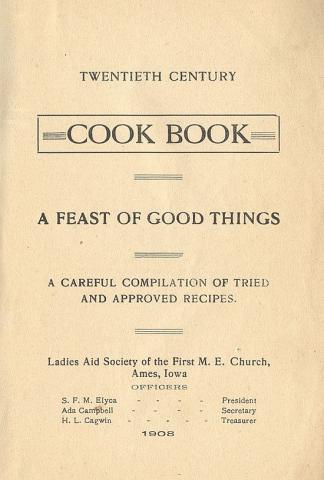




![This inset portion of the 1875 Andreas Atlas Birds Eye View of Ames shows the wood-frame Methodist Church (7) located at the corner of Kellogg and Onondaga. The Baptist Church (8) is located at the intersection of Kellogg and Fifth Street. The Congregational Church (9) is located at the intersection of Kellogg and Sixth Street. 1887 History of Story County, Iowa, by W.G. Allen - About this time [1869], or prior, Mr. Blair, also, donated grounds to the Methodist Episcopal Church Society upon which a church building was to be erected. Rev. J. R. Williams, of Indiana, gave $100 to aid in the building of the church. Many others of Ames and vicinity, also, made generous donations for this object.](https://ameshistory.org/sites/default/files/styles/thumbnail/public/16_1875_birdseye_inset.jpg?itok=6ns3cmvq)
























